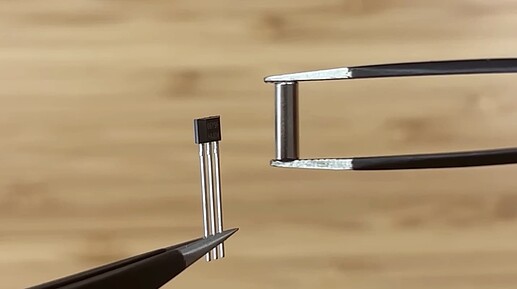What makes an instrument expressive?
Expressive instrument needs to allow subtle control over sound level, timing, intonation, articulation, timbre, vibrato, tone attacks, tone decays, and etc [3]. It’s also important to be able to control these simultaneously [2]. For example, vibrato on a violin is “a simultaneous modulation of pitch, loudness, and timbre (i.e., frequency, amplitude, and spectrum),…with these multiple modulations themselves being shaped (modulated) by the performer” [1].
Another key design consideration is to model a new controller based on an existing instrument, whether it’s a piano or guitar [1]. This will allow experienced musician of that modeled instrument to intuitively translate their skills to the new instrument.
And it’s important to create a community around that instrument [1]. Large pool of players will lead to new techniques being developed for example.
Well, there is a new instrument in development right now that may satisfy these three factors!!
Meet Wiggler ![]()
Designed by Chris from Sound Werkshop, Wiggler is “a monophonic expressive synthesizer with keys that you can wiggle for vibrato and press down for emphasis. There are 8 keys tuned to a user selectable scale, and they ride on a flexible mechanism called a “flexure” that enables the motion. Wiggler is meant to be an immediate and affordable way to enable people to feel the delight of playing an expressive synth”!
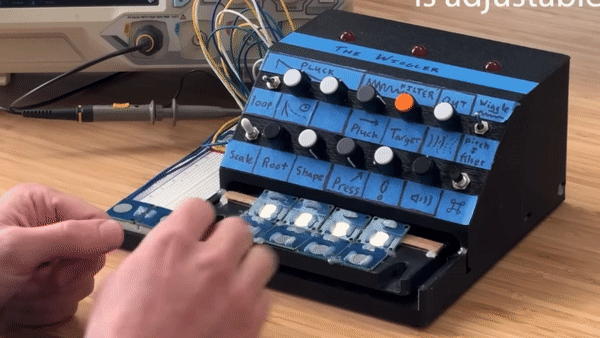
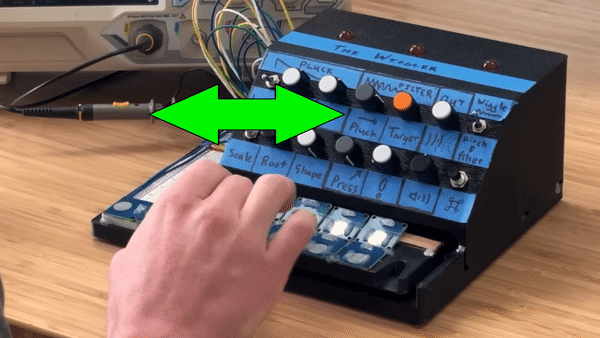
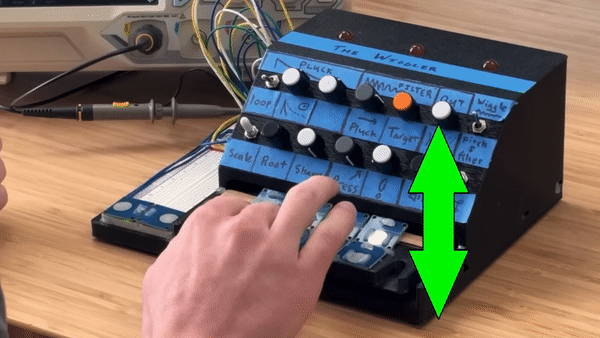
Your other hand is free to either change the synth parameters via knobs or shift the octaves via two capacitive pads located on the left.
This video demonstrates all of these beautifully!!
Daisy Powered! ![]()
Wiggler is powered by Daisy Seed. You can think of Daisy as like an Arduino, but it can output sound!
So, you can design a self-contained instrument that outputs sound from itself!
Wiggler’s creator preferred this as opposed to designing something like a MIDI instrument for controlling other hardware synths or software synths in a computer. He states, “…expressive controllers are each so unique the synth patch and interface need to be designed to compliment them.”
How Does It Work? ![]()
The key feature of the Wiggler is the ‘flexure’ that enables the 2 dimensional wiggle motion!
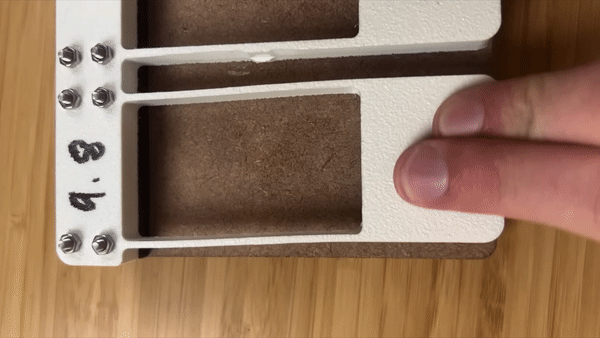
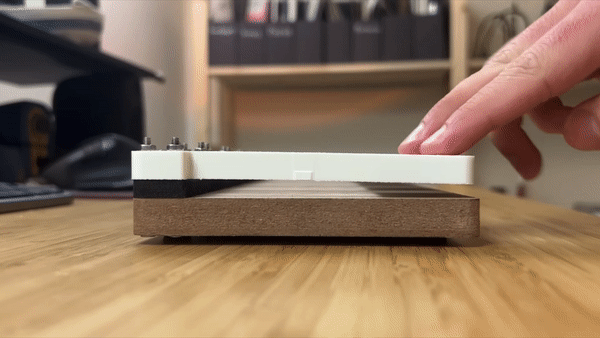
To measure this motion, hall effect sensor was utilized! It measures the proximity of a magnet, so it’s great for measuring movement without any contact.
There are two pairs of magnet and hall sensor. One for measuring the vertical motion and the other for measuring horizontal motion. The sensor outputs a voltage which can be read by Daisy. From there, he mapped these data to synth parameters!
Creator Behind Wiggler ![]()
Chris (AKA Loonie on Discord) from Sound Werkshop has a background in mechanical engineering and his love for making things led to learning about programming and electronics through Arduino.
He first got into synthesizer because of the need to make music on the bus. Being a guitarist though, he became frustrated with the keyboard interface that exists in most synthesizers. The solution to this dilemma was to start making custom controllers with a more guitar inspired layout. And he was hooked!
Inspiration ![]()
During his search for music controllers that used guitar style note layout, he discovered the LinnStrument and was inspired by Roger Linn’s interviews about expressive synthesizers. In one particular interview, Linn made a beautiful sound on LinnStrument that was simply just a square wave going into a low pass filter. This showed Chris the power of expressive control that can make simple synth patch sound great.
Other inspirations for Wiggler include Ondes Martenot, Duduk (Chris found it inspiring that this acoustic instrument was limited to one scale instead of being chromatic and yet made beautifully expressive music), and MiniMoog (all in one instrument with a simple interface that has room to explore).
Goal ![]()
I know the burning question that everyone has right now is…
“Will this become a product? I absolutely NEED this in my life!”
Good news! Chris’s goal is to turn Wiggler into a product!! Around December of 2022, he decided to pause work and do synthesizers full time as Sound Werkshop.
Turning a prototype into a product is no easy task, so if you want to support his endeavor, please consider subscribing to his Patreon. It will also support his video series on YouTube that will document the development process.
Update ![]()
Here’s a sneak peak of Wiggler V2!
References
[1] Dobrian, C. and Koppelman, D. “The ‘E’ in NIME: Musical Expression with New Computer Interfaces”.
Proceedings of the 2003 Conference on New Interfaces for Musical Expression (NIME06), pp.
277–282. Paris: IRCAM, 2006.
[2] Marrin, T. Inside the Conductor’s Jacket: Analysis, Interpretation and
Musical Synthesis of Expressive Gesture. Ph.D thesis, Cambridge,
MA: Massachusetts Institute of Technology, 2000.
[3] Poepel, C. “On Interface Expressivity: A Player-Based Study”.
Proceedings of the 2005 Conference on New Interfaces for Musical
Expression (NIME05), Vancouver, BC, Canada, 2005.

